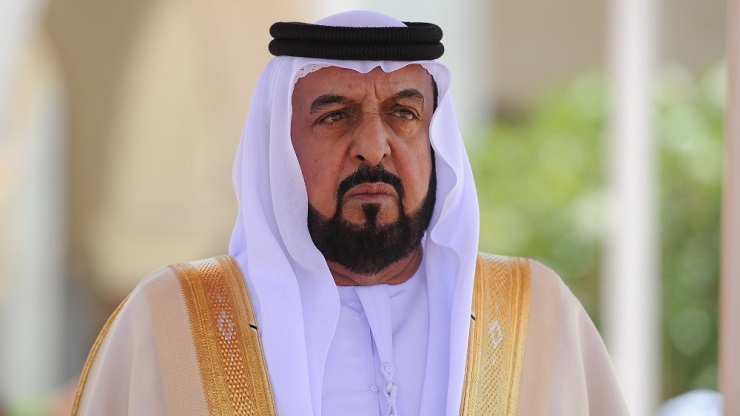Whereas the leaders of both Saudi Arabia and the UAE, popularly known as MBS and MBZ respectively, have a number of reasons to stay united and support each other, inter-state relations are never static, with critical differences between them emerging at every turn even when state interests converge deeply. When the UAE decided in 2019 to withdraw its troops from Yemen, it was percieved as an act of ‘abandoning’ of Saudi Arabia. However, whereas differences did not, at the time, turn out to be too big to bridge, there remains little doubt that the UAE, already an important regional player, is changing its geo-political game in the wake of increasingly weakening Saudi position in the Middle East. The tiny Arab state is, as a part of its new game-plan, redefining and changing its relations, properly utilising the COVID-19 context, with both the US and Iran.
This change of game-plan is supposed to work at two levels: globally, the UAE aims to replace the Saudis as the US’ biggest regional ally and thus become a front-runner; regionally, by redefining its relations with Iran, it hopes to emerge as a new leader. By doing so, the UAE further aims to not only challenge Turkish regional ambitions, but also position itself as a major interlocutor between the US and Iran in the future.
This was clearly observed when, as opposed to Saudi Arabia, the UAE officials did support easing of sanctions on Iran to help it fight the pandemic. The support directly translated into medical shipments sent to Tehran. Again, as opposed to Saudia accusing Iran for the spread of COVID-19 in the Middle East, the UAE joined hands, out of its bid to change its image in the region, with the WHO to send medical aid. The Emirati air-force deployed an aircraft that carried 7.5 tonnes of cargo from Dubai to Iran.
The Saudis, on the other hand, took a series of action that showed them hardening the usual “battle lines” against Iran. Contrasting policies of the UAE and Saudia tend to highlight the differences. As early as March 6, the Saudi official said that Iran’s “irresponsible actions….are a proof of Iran’s direct responsibility in increasing COVID-19 infections and in the virus’s outbreak all around the world…”
At the same time, the Saudis have been trying to make sure that no international pressure builds on the US regarding easing sanctions on Iran. In this regard, the Kingdom, along with some other countries, blocked the Non-Aligned Movement’s statement that called for lifting US sanctions on Iran to enable it to better cope with the pandemic.
The UAE, however, did not become a party to this, thus maintaining its own course vis-à-vis Iran that it had adopted initially by withdrawing its forces from Yemen, deployed against the Iranian supported Houthis.
Similarly, when the US and Iran came eye-ball to eye-ball in the recent military stand-off after General Soleimani’s killing, the UAE was the first from the ‘Saudi camp’ to reach out to Iran to make sure that it remains safe from attacks. The Trump administration also remained silent when the UAE last October released US$700 million in frozen Iranian assets that ran counter to US and Saudi efforts to strangle Iran economically with harsh sanctions.
Apart from the Iran question, the Saudi-UAE ‘tensions’, even after UAE withdrawal from Yemen, still continue to recur in Yemen. In Yemen, the Saudi supported government and the UAE supported Southern Transitional Council remain constantly at logger heads. In March, tensions escalated when the Saudis deliberately blocked Southern Transitional Council officials from returning to Aden for political negotiations, showing how both blocks were far from playing for each other as allies, and that they were more of involved in a power struggle to give their supported factions an upper hand in any future political set up.
Already, political differences between the Yemeni government and the Council have translated into military conflict with Saudia deciding to expand its deployment of elite forces to guard the city of Aden against any hostilities instigated by the [UAE backed] Southern Council.
In Syria, the UAE has been playing its game against Turkey. On the one hand, as some media reports indicated, the UAE has been actively trying to sabotage US support for Turkey’s interventions in Syria, and on the other, it has even offered billions to Syria’s Assad to break the ceasefire in Idlib and attack Turkish forces, although MBZ called this money ‘aid’ for the fight against COVID-19.
Whereas the UAE’s intention as to engage the Turkish forces in a costly war, larger regional ambitions were also at work there. It was UAE’s response to Turkey’s increasing involvement in Libya. The year-long offensive on Tripoli mounted by Haftar’s UAE-backed Libyan National Army has been stalled by Ankara’s deployment of drones, Turkish troops and its proxy ‘warriors’ from Syria.
The UAE is thus actively engaged in at least three different scenarios and is pursuing policies that seemingly run counter to the interests of its traditional ally, Saudi Arabia.
The underlying shift in policies is as much a part of the growing differences between the two Gulf countries as a glimpse of growing power struggle within the Arab countries about regional leadership roles. The Saudis are seemingly undergoing a ‘hegemonic fatigue’ and the Emirati leaders, sensing the Saudi state of affairs and the decline, are gearing up to switch the roles; hence, the easing of tense relations with Iran and increasingly assertive geo-political indirect interventions in Yemen (against Saudia) and in Syria (against the Turks).
Salman Rafi Sheikh, research-analyst of International Relations and Pakistan’s foreign and domestic affairs, exclusively for the online magazine “New Eastern Outlook”.
